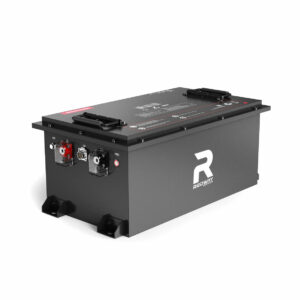How to Choose and Maintain the Best Trailer Battery?
Trailer batteries power essential systems like lights, brakes, and appliances. Choose based on type (AGM, lithium, lead-acid), capacity, and usage. Maintain by charging regularly, avoiding deep discharges, and storing properly. Lithium batteries last longer but cost more; AGM balances affordability and performance. Always match voltage (12V standard) and capacity to your trailer’s needs.
What Are the Different Types of Trailer Batteries?
Trailer batteries include lead-acid (flooded), AGM (absorbent glass mat), and lithium-ion. Lead-acid is affordable but requires maintenance. AGM is spill-proof and vibration-resistant, ideal for rough terrains. Lithium batteries offer lightweight design, longer lifespan (2,000+ cycles), and faster charging but are costlier. Choose AGM for balance; lithium for long-term investment.

How to Calculate the Right Battery Capacity for Your Trailer?
Calculate amp-hour (Ah) needs by listing all devices (e.g., lights: 10W, fridge: 50W) and daily usage hours. Convert watts to amps (Watts/Voltage). Sum totals and add 20% buffer. Example: 100Ah for basic setups; 200Ah+ for RVs with appliances. Use a battery monitor to avoid over-discharging below 50% capacity.
When calculating capacity, consider inefficiencies like inverter losses (typically 10-15%) and parasitic loads from control systems. For solar-powered setups, factor in days of autonomy—a 3-day buffer ensures reliability during cloudy weather. Use the formula: Total Ah = (Daily Consumption × Days of Autonomy) ÷ (Battery Voltage × Depth of Discharge). For example, a 150W fridge running 8 hours daily consumes 100Ah monthly. Pair this with a 200Ah lithium battery to stay within 80% discharge limits.
| Appliance | Power (Watts) | Daily Use (Hours) | Ah Required |
|---|---|---|---|
| LED Lights | 10 | 5 | 4.2 |
| RV Fridge | 50 | 24 | 100 |
| Water Pump | 30 | 2 | 5 |
Why Is Voltage Critical in Trailer Battery Systems?
Most trailers use 12V systems, matching automotive standards. Using 6V batteries requires wiring two in series. Incorrect voltage damages electronics or reduces efficiency. Lithium batteries maintain stable voltage under load; lead-acid drops voltage as they discharge. Verify inverter/compatibility to prevent system failures.
How to Install a Trailer Battery Safely?
Mount the battery in a ventilated, non-metallic tray. Secure with stainless steel straps to prevent movement. Connect red (+) to positive terminal, black (-) to negative. Use corrosion-resistant connectors and apply dielectric grease. Install an in-line fuse (30-50A) near the battery. Test connections with a multimeter (12.6V = fully charged).
Can Extreme Temperatures Affect Trailer Battery Performance?
Yes. Cold reduces lead-acid capacity by 20-50%; lithium handles -20°C to 60°C better. Heat accelerates corrosion in lead-acid batteries. Insulate batteries in winter; avoid direct sun in summer. Use thermal wraps or heated battery boxes for sub-zero climates.
In freezing conditions, lead-acid batteries lose electrolyte conductivity, while lithium-ion cells experience slower chemical reactions. Preheating lithium batteries to 5°C before charging prevents plating. For summer storage, keep batteries in shaded compartments and monitor internal temperatures with Bluetooth-enabled sensors. AGM batteries are less prone to thermal runaway but still degrade 30% faster above 35°C.
| Temperature Range | Lead-Acid | Lithium |
|---|---|---|
| -20°C to 0°C | 50% capacity | 85% capacity |
| 25°C | 100% efficiency | 100% efficiency |
| 40°C+ | High corrosion risk | 5% capacity loss/year |
What Are Common Trailer Battery Maintenance Mistakes?
Ignoring water levels in flooded batteries, over-tightening terminals (cracks cases), and storing batteries discharged. Use distilled water for refills. Clean terminals with baking soda paste. Recharge every 3 weeks during storage. Never mix old and new batteries.
How Does Solar Charging Work for Trailer Batteries?
Solar panels connect via a charge controller to regulate voltage. A 100W panel generates ~30Ah daily. MPPT controllers optimize power; PWM is cheaper. Lithium batteries charge faster from solar. Ensure panels are angled correctly and batteries don’t exceed absorption voltage (14.4V for AGM).
“Lithium batteries revolutionize trailer power with 10-year lifespans, but proper BMS (battery management system) is non-negotiable. AGM remains king for budget-conscious users. Always prioritize cycle depth over price—cheap batteries cost more long-term.”
– John Carter, RV Power Solutions Engineer
Conclusion
Selecting and maintaining a trailer battery requires balancing type, capacity, and usage. Lithium offers longevity; AGM provides reliability. Regular maintenance and correct installation prevent failures. Solar integration enhances off-grid capability. Avoid common pitfalls like improper storage to maximize battery life.
FAQs
- Q: Can I use a car battery in my trailer?
- A: Temporarily, but car batteries aren’t designed for deep cycling. Use deep-cycle AGM or lithium.
- Q: How often should I replace my trailer battery?
- A: Lead-acid: 3–5 years; AGM: 4–6 years; lithium: 8–10 years.
- Q: Does a higher Ah rating mean longer runtime?
- A: Yes, but ensure your charging system can handle the capacity.
